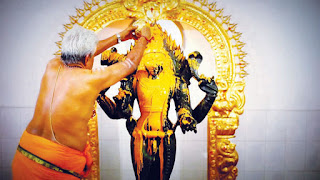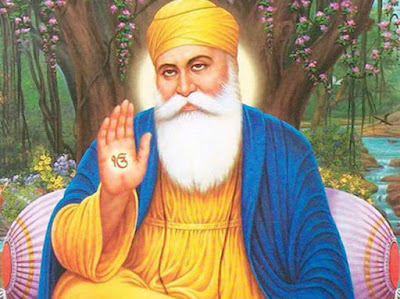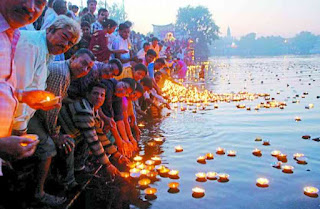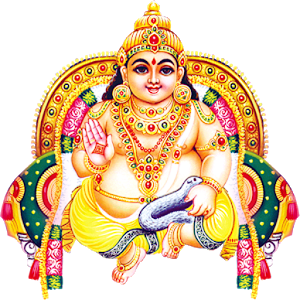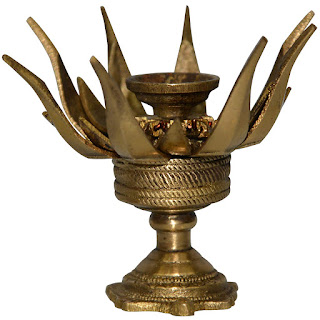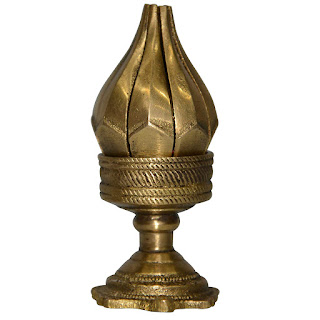The One of The Best Instruments Stringed in World
See Article History
Stringed instrument, any musical instrument that produces sound by the vibration of stretched strings, which may be made of vegetable fibre, metal, animal gut, silk, or artificial materials such as plastic or nylon. In nearly all stringed instruments the sound of the vibrating string is amplified by the use of a resonating chamber or soundboard. The string may be struck, plucked, rubbed (bowed), or, occasionally, blown (by the wind); in each case the effect is to displace the string from its normal position of rest and to cause it to vibrate in complex patterns.
Because most stringed instruments are made from wood or other easily perishable materials, their history before written documentation is almost unknown, and contemporary knowledge of “early” instruments is limited to the ancient cultures of East Asia and South Asia, the Mediterranean, Egypt, and Mesopotamia; but even for these places historians must depend largely on iconographic (pictorial) sources rather than surviving specimens.
Stringed instruments seem to have spread rapidly from one society to another across the length and breadth of Eurasia by means of great population shifts, invasions and counterinvasions, trade, and, presumably, sheer cultural curiosity. In the Middle Ages the Crusades (late 11th through the late 13th century) stimulated Europe to adopt a whole set of new instruments; similarly, the Chinese adopted many new instruments from their Central Asian neighbours as Buddhism spread eastward and as the Han Chinese expanded their influence across the region (roughly, the 3rd century BCE to the 10th century CE). Indeed, the only world area that did not echo to the sound of strings was the pre-Columbian Americas.
No system of classification can adequately categorize the interactions of natural material, craftsmanship, and exuberant imagination that produced an endless variety of stringed instruments. In the West the most widely accepted system of classification is that developed by E.M. von Hornbostel and Curt Sachs, a method based on the type of material that is set into vibration to produce the original sound. Thus, stringed instruments are identified as chordophones—that is to say, instruments in which the sound is produced by the vibration of chords, or strings. This main category is then further divided into four subtypes—lutes, zithers, lyres, and harps—according to the manner in which the strings are positioned in relation to the body of the instrument. Within these categories, the descriptive nomenclature of an instrument is given in terms of parts of the body: for example, the belly (front; soundboard), back, sides, and neck. Instruments are not necessarily related only to others in the same classification. Transformations continually occur, and “hybrids,” according to the Sachs-Hornbostel system, may in fact represent altogether viable subtypes of their own.
The Production Of Sound
The ear, because of its own structure, adds to and subtracts from the outside sound. It is, for instance, relatively insensitive to low-frequency sound pressure but is extremely sensitive to fine degrees of pitch change. At the same time, it can accept a great number of pitch and tuning systems. On a worldwide basis, there are a large and varied number of tonal systems, the most ancient stemming from China. The oldest known of these in the West is the so-called Pythagorean system, articulated by the famed 7th-century Greek philosopher and mathematician Pythagoras; others include meantone temperament, just intonation, and the equal-tempered system, methods of tuning calculation that vary slightly in the exact size they assign to the intervals within an octave. All of these systems represent theoretical mathematical concepts to some degree, and their origins must be sought in arcane numerological systems rather than in practical musicianship. Thus, “tuning” and “playing in tune” do not necessarily refer to the same thing; players and tuners make constant adjustments to any basic mathematically determined framework according to their judgment and experience. In other words, even though a given “scientific” tuning system outlines scales and modes, the instrumentalist who plays an instrument with great pitch flexibility (the violin, for instance) spends much time in the spaces between the notes assigned in the given scale. The Japanese zither (koto), for example, can be tuned according to a number of fixed systems; nevertheless, its player produces many microtonal (using intervals that differ from the equally spaced semitones of Western music) variations on these fixed pitches by manipulation of the strings. The person who plays the Vietnamese dan bau monochord creates all pitches and nuances on its metal string by pulling in the flexible bamboo stem to which it is attached. In Western musical tradition, moreover, piano tuners would not think of tuning altogether according to the dictates of a well-tempered system; rather, they use a so-called stretched tuning, in which they imperceptibly sharpen (raise) pitches as they ascend and thus make the highest notes relatively sharper than the lowest ones. Investigation has disclosed that string players tend to play in the Pythagorean rather than the well-tempered system.
Inconsistencies, then, are inherent in all tuning systems; makers of fretted lutes—such as the guitar and the Greek laouto (a type of lute with moveable frets), for example—operate according to a combination of ear and rule of thumb when they insert or adjust frets (note-position markers—e.g., of gut or wire) in the fingerboard. Such instruments are fretted according to the “rule of the eighteenth,” in which the first fret is placed at one-eighteenth of the distance from the top to the bottom of the string, the second, one-eighteenth of the distance from the first fret to the bottom, and so on. Even if this method produced an acoustically perfect scale (which it does not), the player would not be able to reproduce this exactly, for as he presses the string to the fingerboard, the string is stretched and is thus slightly lengthened. That is why the act of stopping a string at its exact centre gives a note slightly sharper than the expected octave above the open string. Despite all of this, the search for an acoustically perfect tuning system goes on.
Though constructional methods differ widely from one area and instrument to another, there are a limited number of basic problems to be overcome by the maker of stringed instruments. The very principle that makes it possible for chordophones to sound is string tension; at the same time, tension is destructive to the instrument, since it tends literally to pull it apart. So the body of an instrument must be made of strong material; it must be reinforced, and, at the same time, it must not be so rigid that it cannot easily resonate—i.e., produce a supplementary vibration intensifying that of the string. The challenge of reconciling these opposite needs is the central one for the chordophone maker. Climate too has a marked effect on musical instruments: humidity expands a wooden instrument, and dryness contracts it. Of these factors, dryness is the most harmful, since the contraction of the wood actually pulls the instrument apart. Much energy has been expended over the centuries in investigations of various varnishes, shellacs, glues, and sealers. Many makers prefer to make their instruments in dry conditions, for the expansion caused by humidity is unlikely to prove as harmful as the contraction caused by dryness.
Aside from a family of Southeast Asian instruments known as boat lutes—which, by definition, are hewn from a single block of wood—and a few other chordophones, including the Japanese biwa (a lute), portions of the koto (a zither), and often the Puerto Rican cuatro (a lute)—the bodies of most wooden instruments are constructed from multiple pieces of wood. The instruments are built up of many pieces of wood glued together; the shaping of curved pieces is accomplished by gouging and planing (as in the belly of the violin) or by heating and pressing in a frame (the sides of the violin or guitar). Soundboards, the most important part of the resonance system of stringed instruments, are carefully planed to close tolerances. Mass-production methods are unsuitable for the production of high-quality chordophones because no two pieces of wood are precisely alike in their acoustical qualities; each piece of wood requires special judgment and treatment. Ideally, therefore, stringed instruments of the highest quality must be individually made. Piano manufacture is a partial exception to this rule, but even in a piano factory, individual treatment and craftsmanship are allowed full sway. The modern piano is a product of several different factories. The cast-iron frames are made by specialized foundries, and the steel strings, the keyboards, and the actions (mechanisms for striking the strings) are produced by specialized firms. Each of these processes requires an experienced artisan, and the work of assembly, polishing, tuning, and tone regulation calls for hours of individual attention to each instrument.
The construction and maintenance of Western stringed instruments generally have been complicated over the centuries by a continual rise in standard pitch, requiring strings to be tightened. Older instruments (such as a Stradivari violin) have been subjected to additional physical strain and therefore needed heavier bass-bars (braces under the belly).
As already stated, the methods of sound production on a stringed instrument include plucking, striking, bowing, and blowing. A string vibrates in a complex way: the entire string vibrates in one segment (producing the fundamental pitch), and various segments at the same time vibrate independently to produce overtones. The resulting sound is weak indeed unless the instrument is provided with a resonator to amplify the sound. The shape of the resonator varies greatly. It has been influenced by the materials, tools, and technology available in the society, the symbolic meaning of the shape, and the sound desired by the culture. The last factor seems to be governed by the first three; that is to say, the prescribed shape of the resonator affects the overtone structure of the instrument, producing a certain timbre (characteristic tone colour), which the society in question then defines as attractive-sounding.

One of the clearest illustrations of the basic importance of the shape of the resonator to a musical instrument is the African mouth bow (a musical bow that the player partially inserts in his mouth). By varying the size and shape of the oral cavity while striking or plucking the single, unfingered string, the player produces a clearly perceptible, if quiet, melody that exists only because the changes in the mouth emphasize various overtones. On stringed instruments with permanently fixed resonators, the size, dimensions, shape of apertures, thickness, and bracing of the resonating surfaces largely determine which overtones will be emphasized and thus what the instrument will sound like. On a well-made violin, for example, the resonances of the body of air enclosed in the body of the instrument and of the belly should be close in pitch to the two strings A and D, thus amplifying and colouring these pitches and their overtones. The sound quality of a stringed instrument is also influenced by the thickness and material of the strings; primarily, however, it is the size and shape of the resonating body and especially the material, density, and thickness of the soundboard that determine the sound of an instrument. A well-known Spanish guitar maker, in a successful attempt to prove the importance of the belly of the guitar, once constructed an instrument—an excellent one—from papier-mâché (an acoustically dead material), except for a carefully chosen and wrought wooden soundboard. Makers, then, devote a large part of their skill and knowledge to the choice of material for the soundboard; the maker of wood-bellied instruments prefers old wood because it is dry and well seasoned. Thus, some guitar makers find the soundboards of discarded pianos unusually suitable for their purposes; makers of the classical Chinese zither, or qin, preferred old coffins or well-seasoned wood from old trees.
The timbre of a struck or plucked stringed instrument is also affected by the manner of setting the string into motion. A string plucked with a sharp point (the player’s fingernail or a plastic plectrum) emphasizes the higher overtones, thus creating a “bright” tone quality. By contrast, a soft pad, such as that on a piano hammer, emphasizes the fundamental pitch. The relative hardness of the hammer on the piano is thus of critical importance to the sound of the instrument and plays a central role in the final process in piano manufacture: voicing. To voice a piano, a skilled worker adjusts the timbre of the instrument by the simple expedient of pricking the felt hammers with needles until a unified quality has been achieved throughout the range of the instrument. The tone of an instrument is also markedly affected by the place where the string is struck. The permanently fixed striking place on keyboard instruments has to be chosen with concern for both the timbre and the mechanical requirements of the instrument. On nearly all other stringed instruments the player varies the tone quality by choosing to pluck, strike, or bow at various places along the length of the string. The exception here is the Aeolian harp, which has no player; its strings are set into vibration by the wind.
Another way in which musicians and musical instrument makers influence the sound of their instruments is by the use of sympathetically vibrating strings. On the piano, for example, when the so-called damper pedal is raised, thus leaving all the strings free to vibrate, the act of striking one note causes all closely related pitches to vibrate in sympathy, thus modifying the loudness and tone of the struck note. This effect (which is encountered also on the zither and harp) is not a central feature of these instruments, but there are numerous Eurasian chordophones on which the principle is of fundamental importance. The plucked instruments of Hindustani music, the sarod and the sitar, possess numerous sympathetic strings tuned according to the notes of the mode being played. The South Asian fiddle, sarangi, has some two to three dozen sympathetic strings; the Norwegian Hardanger fiddle (Hardingfele) has four or five sympathetic strings; and the viola d’amore typically has seven. Sympathetic strings are generally made of thin brass or steel, and their vibration reinforces the upper harmonics, thus producing a bright, silvery sound.


